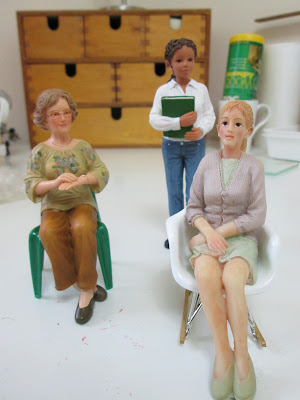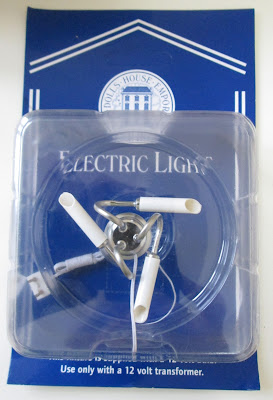I bet you had forgotten all about the chairs I am experimenting with - ooh, sorry I meant, making.
I left you with one built with wood glue and then stained. Results:
- wood glue on clean wood is the best bond for sure
- any surplus glue won't take stain or paint so you have to be super careful
- it is difficult with small complex pieces to get the stain in and around all the tiny shapes evenly once it is built. It is even harder to buff the piece.
The other chair had just been stained with the same stain - Minwax Wiping Stain and Finish - while it was still in pieces.
On the recommendation of a vendor who said it was what she used, I bought a very particular glue from the Atlanta show called Weldbond which claims to stick any material to anything including glass to glass. Now this is where you have to be cautious - just because I never took to it is not a reason not to try it.
I had a go with it; indeed several goes. I could not make it tack up sufficiently to release a piece and certainly not enough to hold parts firm enough to allow me to continue adding another part; so it never got a fair test of strength as it never got to the dry stage. I am not a person who could join up one piece and leave for an hour or better still overnight as recommended. I want to get something built once I have started so I need a glue with a fairly quick tack.
Ultimately I returned to Superglue gel. Results:
- it will glue stained and painted surfaces together
- it makes a fast bond to allow you to build the piece
- it is a strong bond but wouldn't be great on anything being played with as it does 'snap' quite easily
- any excess will dry shiny but the gel is very controllable and all glue needs the ultimate care when applying
- I found it much easier to stain and buff the pieces before assembling
I did also try Kiwi brown shoe polish as a stain, again the same vendor recommended it - her work was excellent and she said that was her method. Maybe it is all about the wood it it going on? It didn't work well on my test pieces. Two applications was still a very thin colour and I found it difficult to get it on evenly, slow to do and smelly!
The shoe polish did however 'improve' the finish on my already stained pieces so you may want to consider using a brown shoe polish like a furniture polish. It evened out and deepened the colour but it didn't give much of a shine.
 |
| obviously the foam seats need covering |
Here is the correct way to finish the kits:
- brush on a base stain and wipe off the excess and allow to dry
- brush on or spray on a sealer and allow six hours to dry
- go over the furniture with 000 steel wool
- highlight by applying glaze stain and removing in areas of wear (there is also a more complex method of blending stains and highlighting that you can do at this stage). allow 24 hours to dry
- buff the surface until you are happy with the finish and then apply the top coat of varnish or lacquer. Do two or more coats rubbing down with 000 wire wool in between.
Sadly I am all for shortcuts; my excuse being I will never be able to make/build museum standard pieces so there is no point in frustrating myself trying.
I will be applying Minwax stain with a brush from a tin or one of their terrific pens. Will probably do two coats, rubbing down in between and adding a coat of satin finish polyurethane varnish to seal and give it a slight sheen.











































